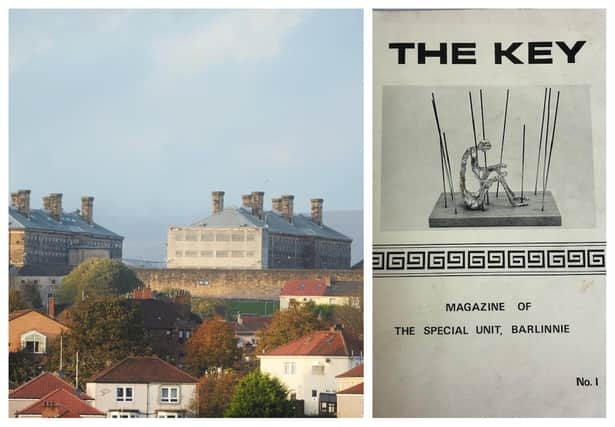National Library of Scotland gifts collection to prisoners as rare inmates magazine acquired


The acquisition was confirmed as it emerged access to millions of items from the national collection have now been made available to inmates across the country.
Two copies of ‘The Key’ have been donated to the library with the magazine, which was produced by prisoners in the jail’s Special Unit, featuring work by inmates including Jimmy Boyle and Hugh Collins. Both were former Glasgow gangland figures imprisoned for murder who went on to become artists after their release.
Advertisement
Hide AdAdvertisement
Hide AdControversy surrounded the unit given its use of art and group therapy to rehabilitate the most violent offenders. With its perceived ‘soft touch, it became known as the Wendy House and was derided in the tabloid press.


Ian Scott, general collections curator at NLS, said he was delighted to receive the magazines, which lasted for only three editions.
He said: “The original plan had been to send a copy to every prison in Scotland, but the prison authorities took a look at the magazine and vetoed it. There was a lot of controversy in the prison service about the unit.
“The unit was a tabloid sensation in Scotland, but in the rest of the world it was the subject of academic study. It was seen as a very important case study and has been widely copied.”
He added: “Barlinnie has been part of Scottish life for generations. The magazine also lets us look at that Scottish cliché of the hardman. The Key gives us a bit of insight into these men, who had done terrible things, and offers a glint of light as to why they were like that.”
NLS’s digital collection is now accessible in all 13 publicly-owned prisons after a project run with Fife College opened up the material to inmates, despite the prison ban on the internet.
The college, which runs learning courses through Scotland’s prisons, installed an intranet system and stand-alone server in Barlinne to hold the collection of digital books, maps, photographs and moving images, with the model now rolled out across the prison estate.
A spokesman for the Scottish Prison Service said: “We are very grateful to both NLS and to Fife College for this innovative and evolving collaboration and we look forward to building on this success to ensure the best possible educational opportunities for those in our care. ”
Advertisement
Hide AdAdvertisement
Hide AdAudrey Mitchell, head of prison contracts at Fife College, said: “There is a public perception about what prisoners should or should not have, but a progressive society thinks prisoners should get the best experience of being in prison so they can come out being effective citizens and equipped with life skills so they can become valued members of their community.”
Graeme Hawley, head of general collections at NLS, said the library had reached out to the “invisible” prison population.
He said: “You are trying to reach people digitally and you think everyone is online, but it’s not the case. There are blind spots.
"The budget for learning resources in prisons is small. The library staff are experts, but the library stock is expensive. Overnight, all this new material appeared. For the teaching staff in prison, it was almost like Christmas Day.”